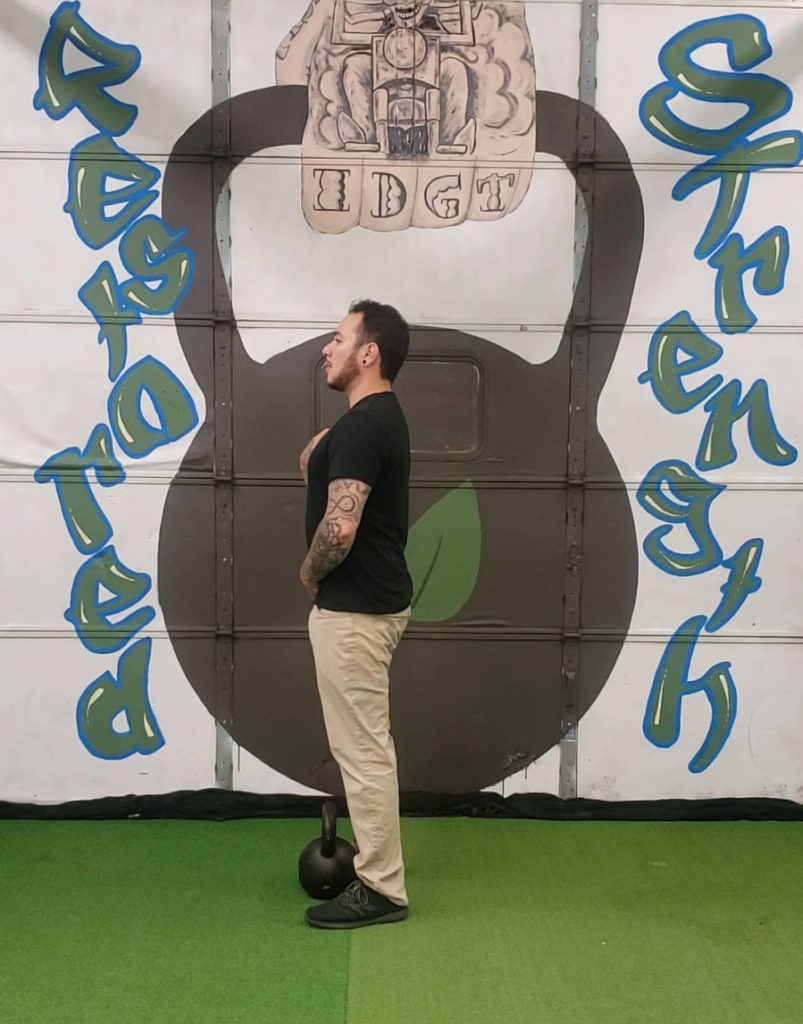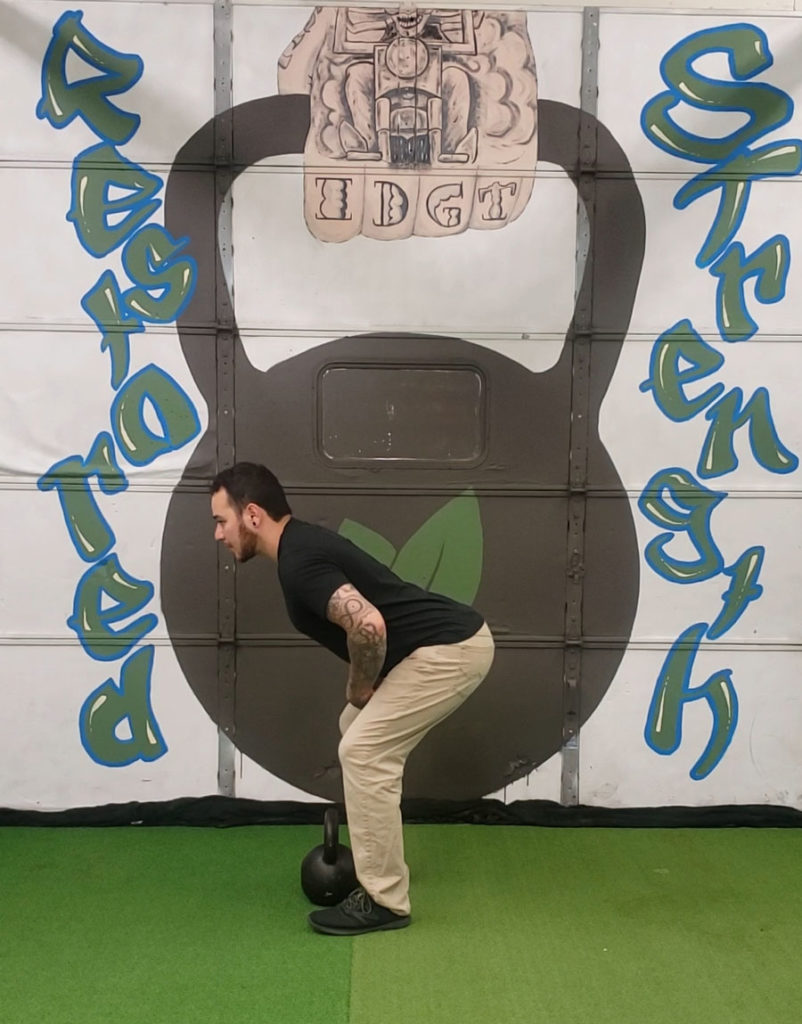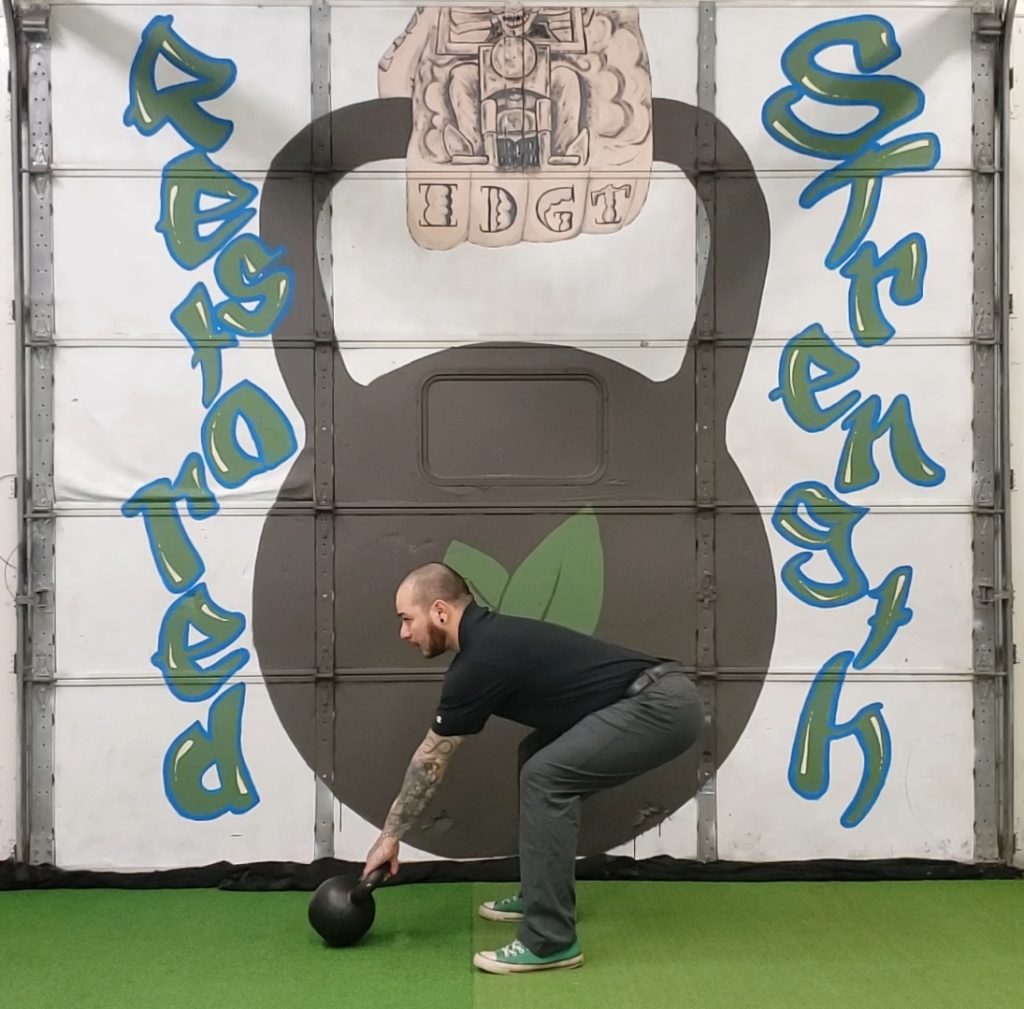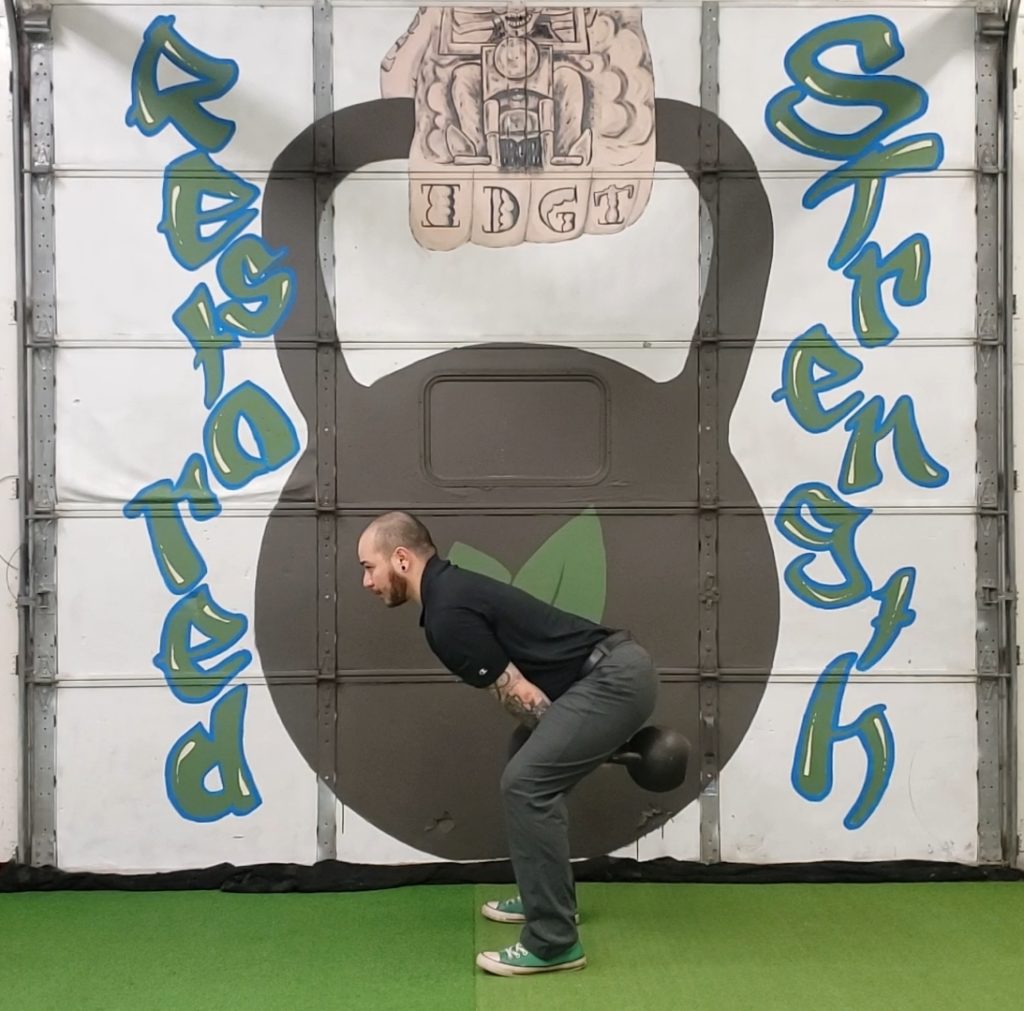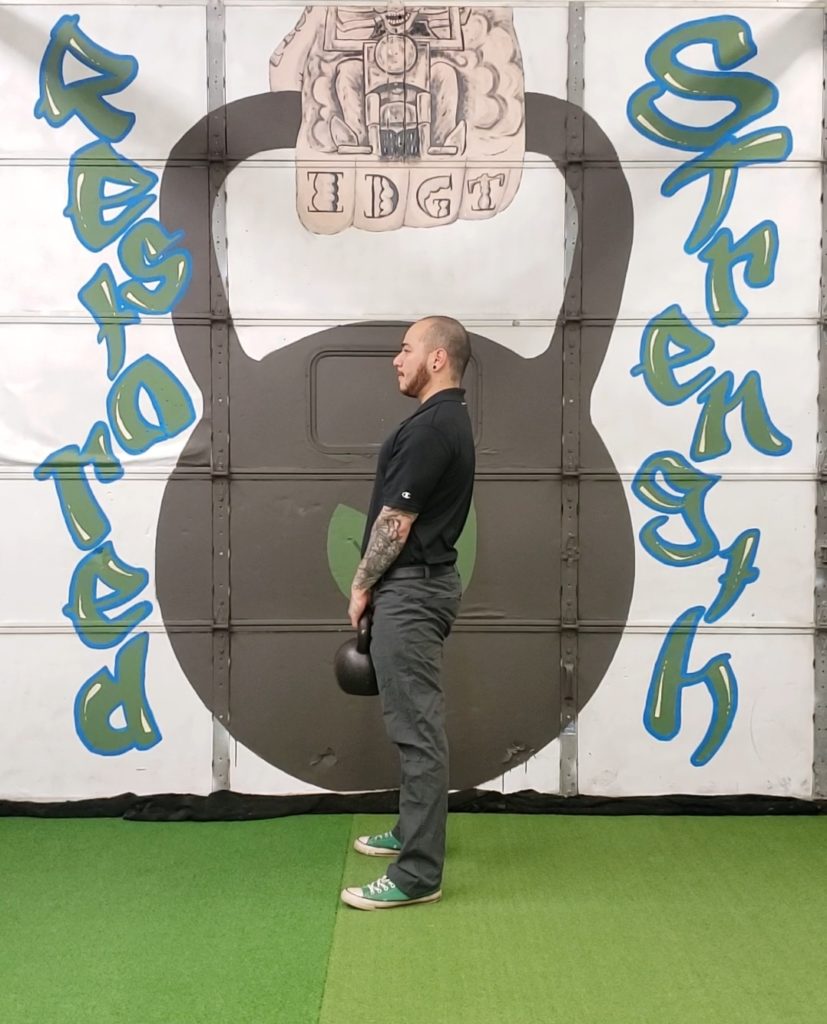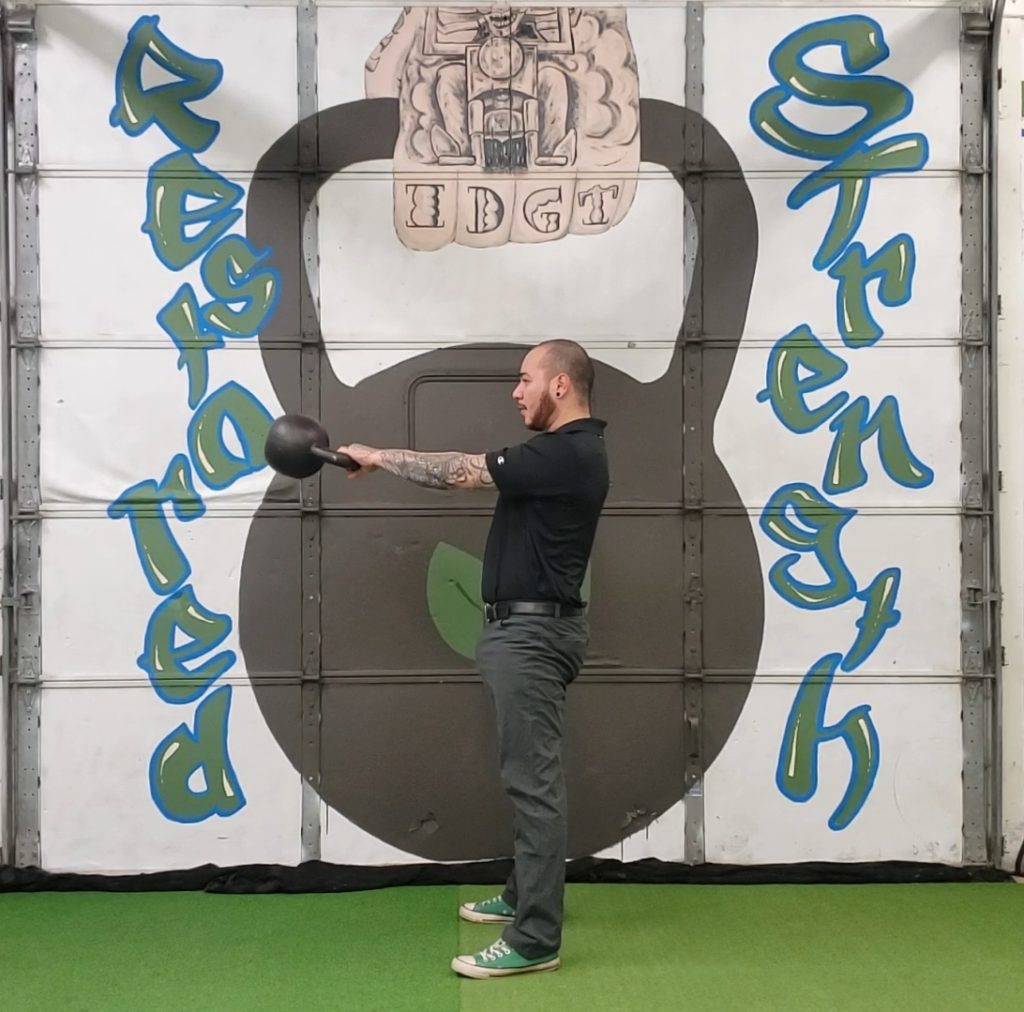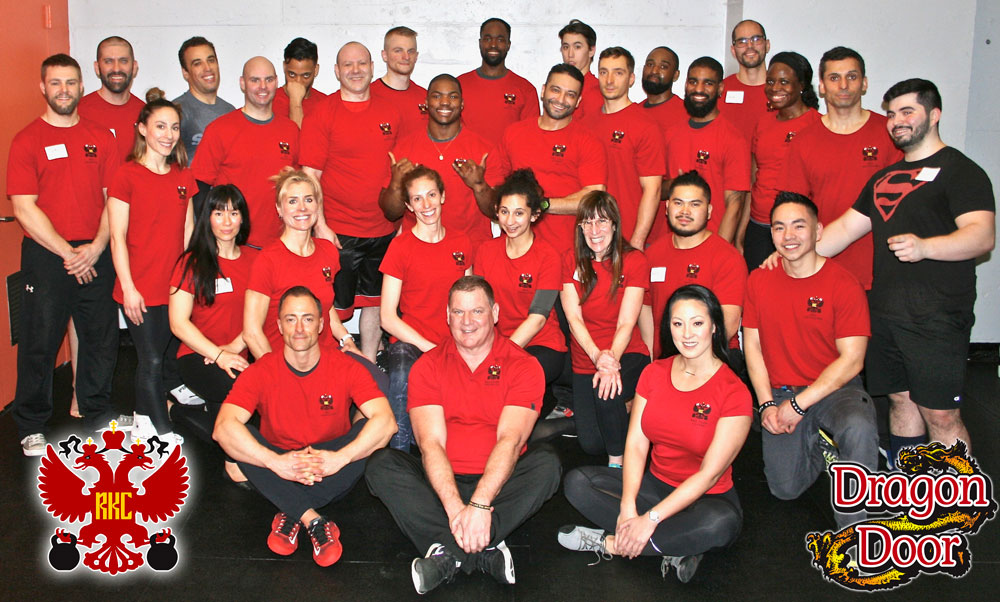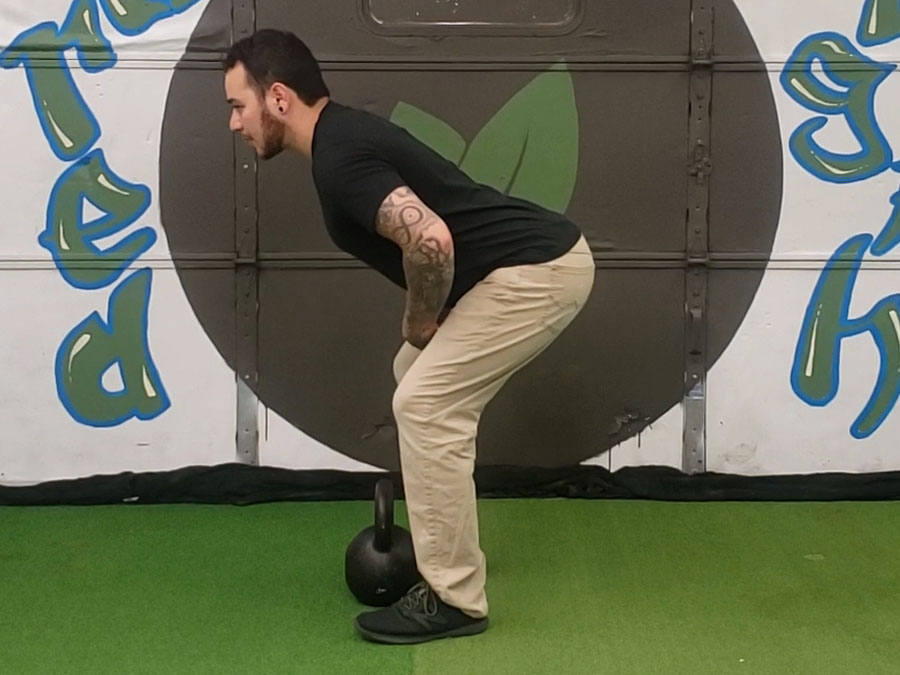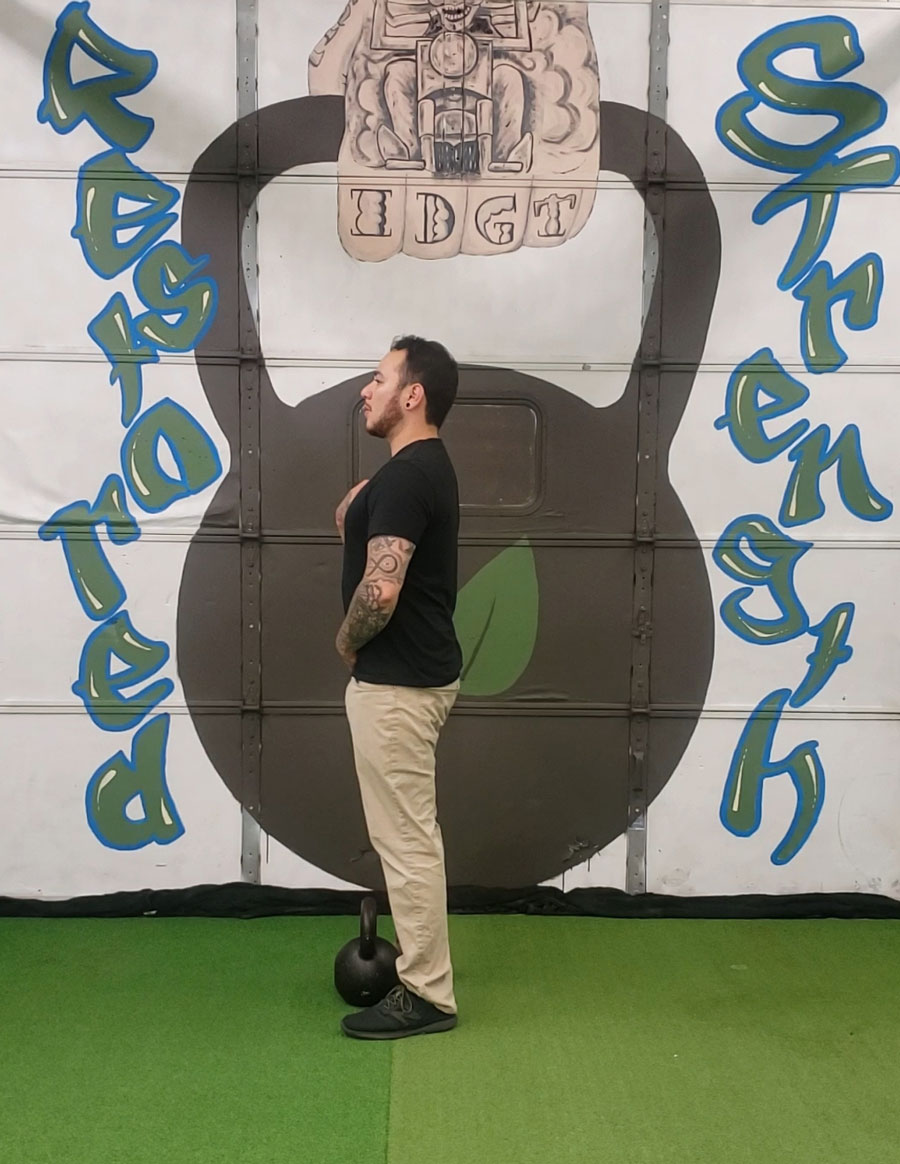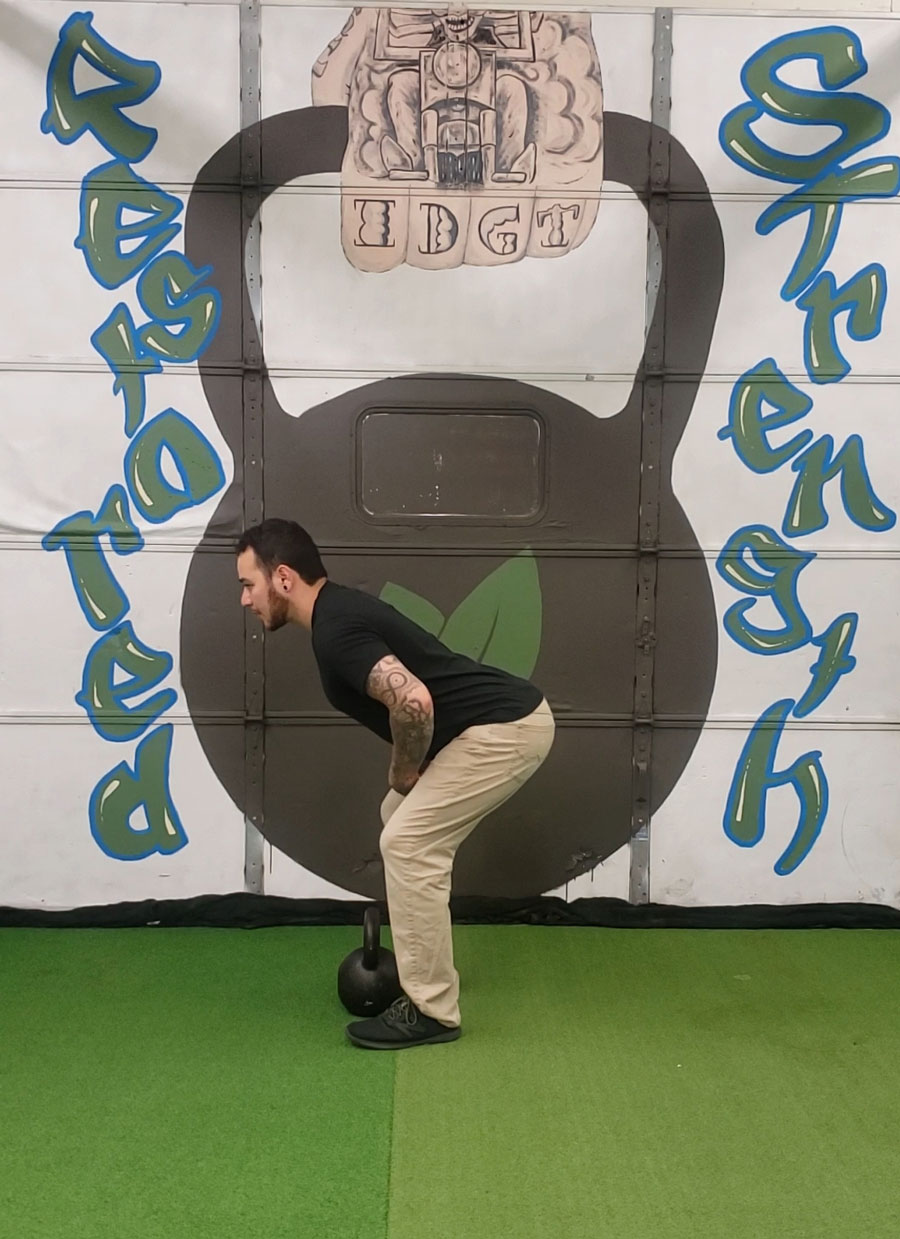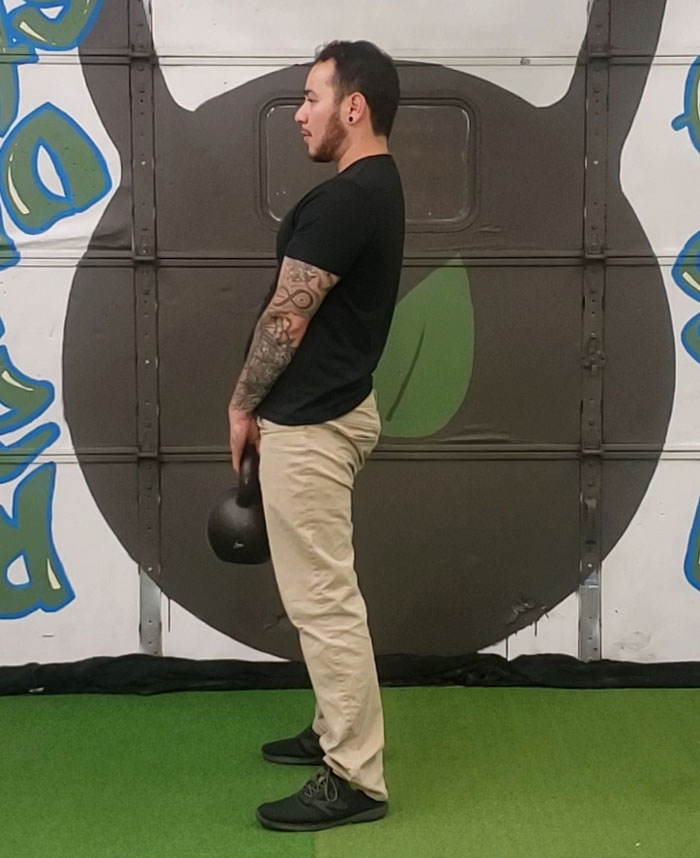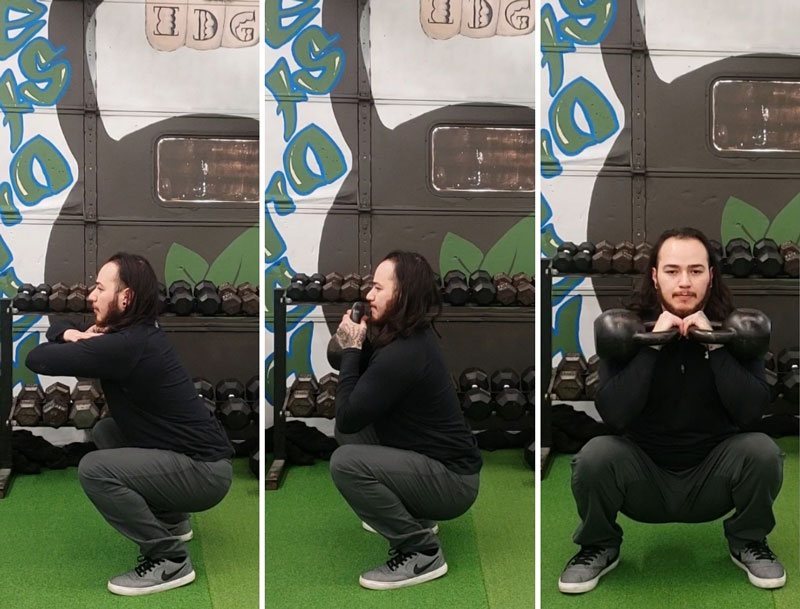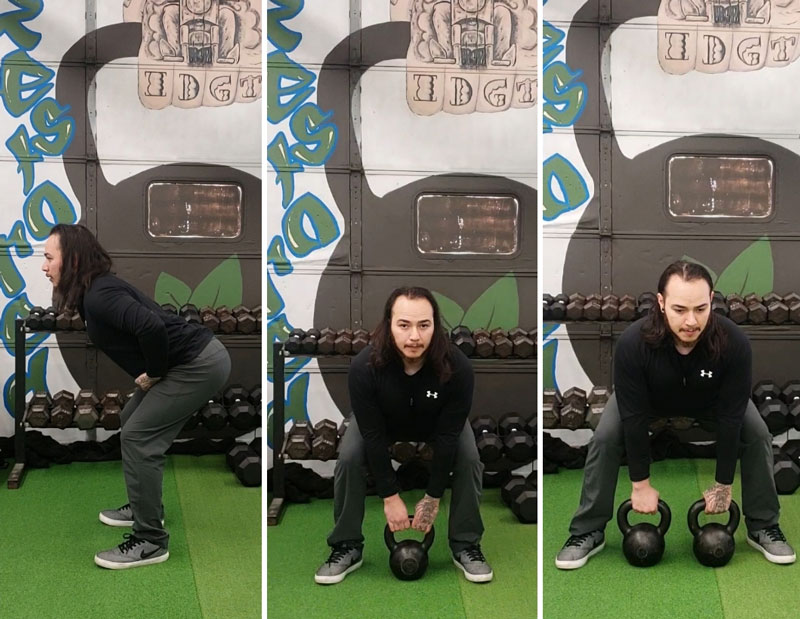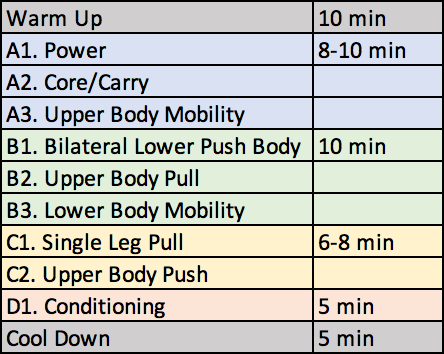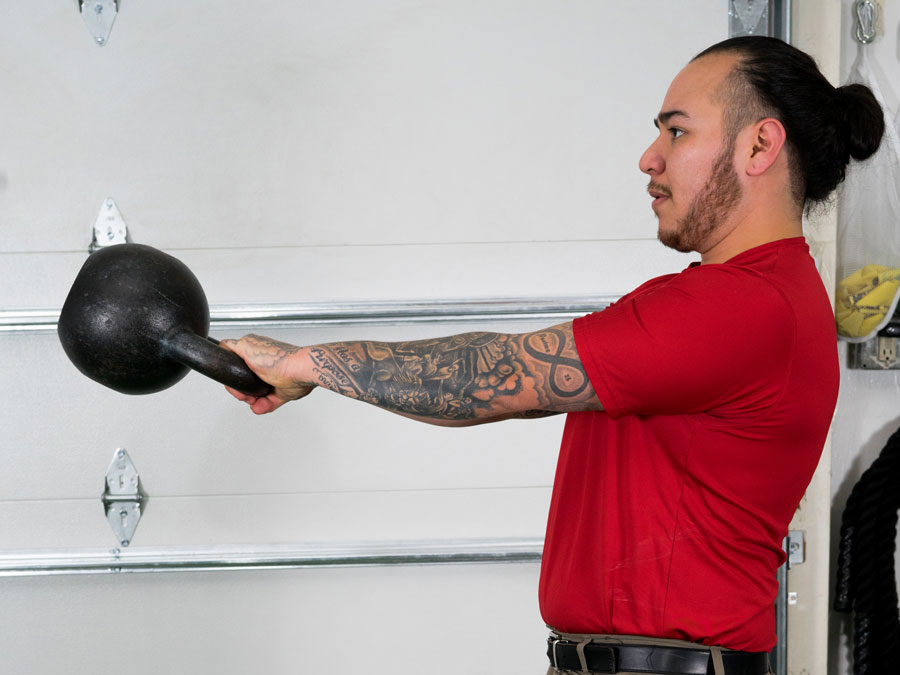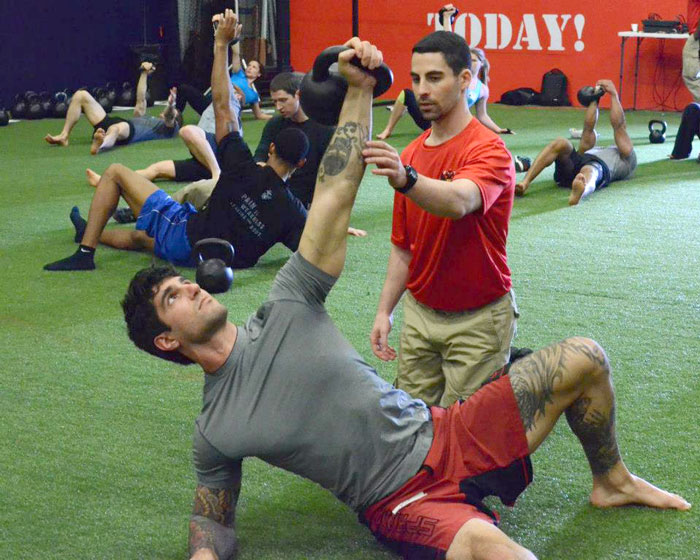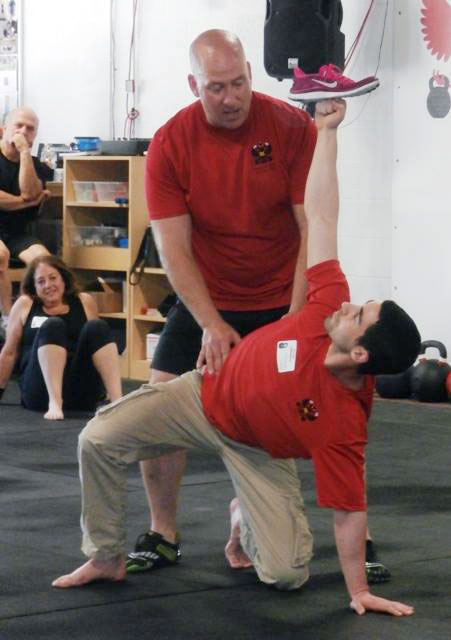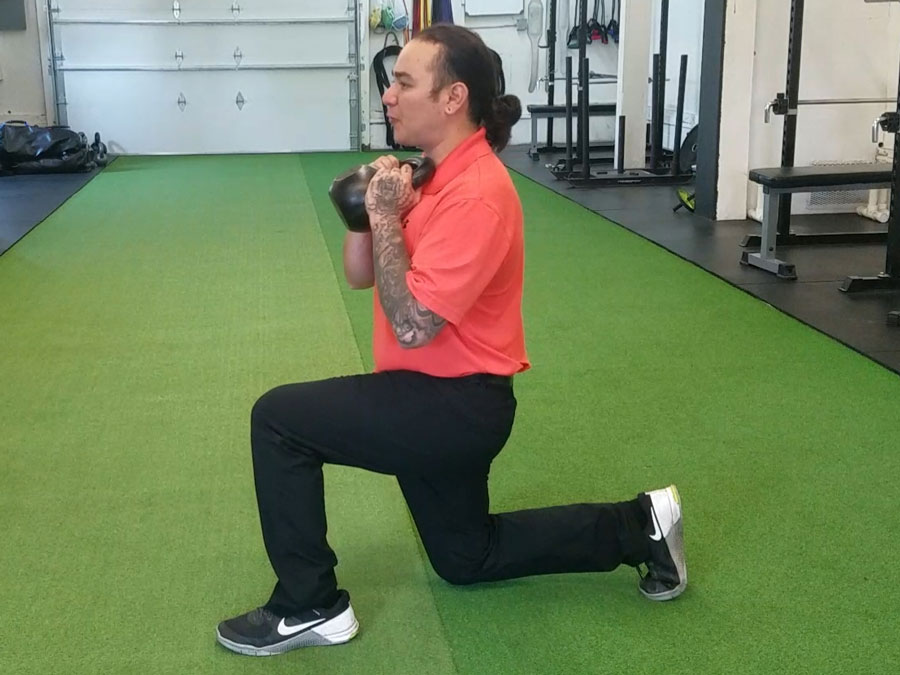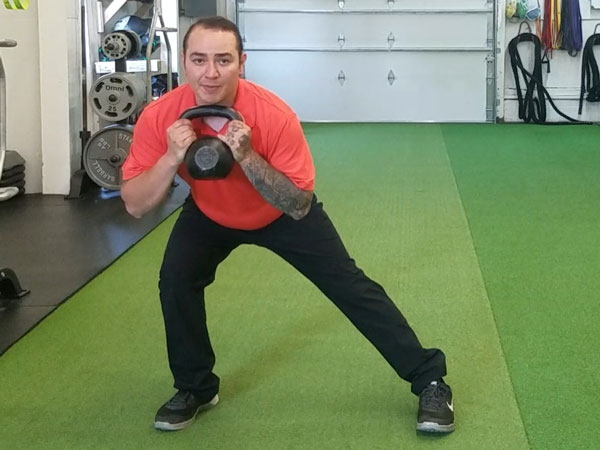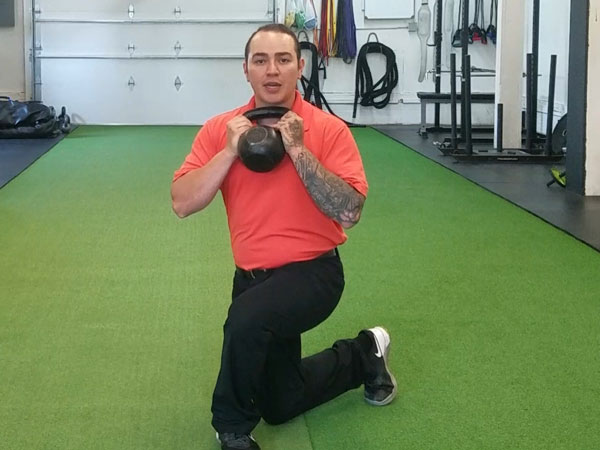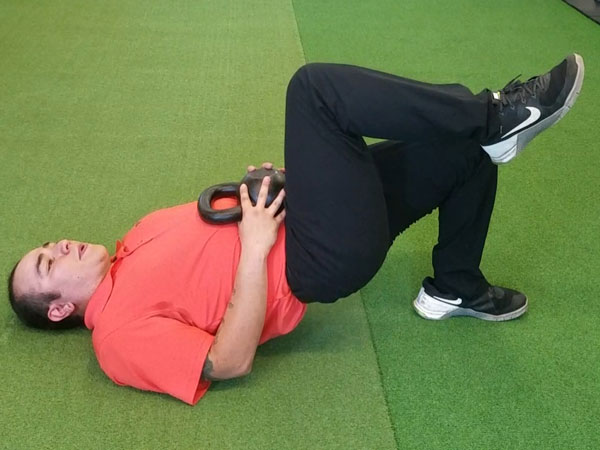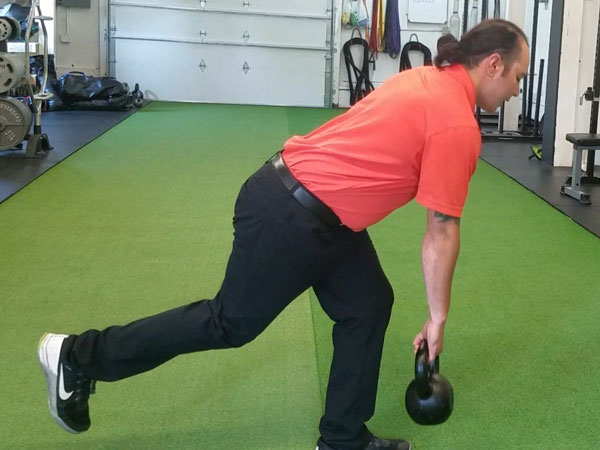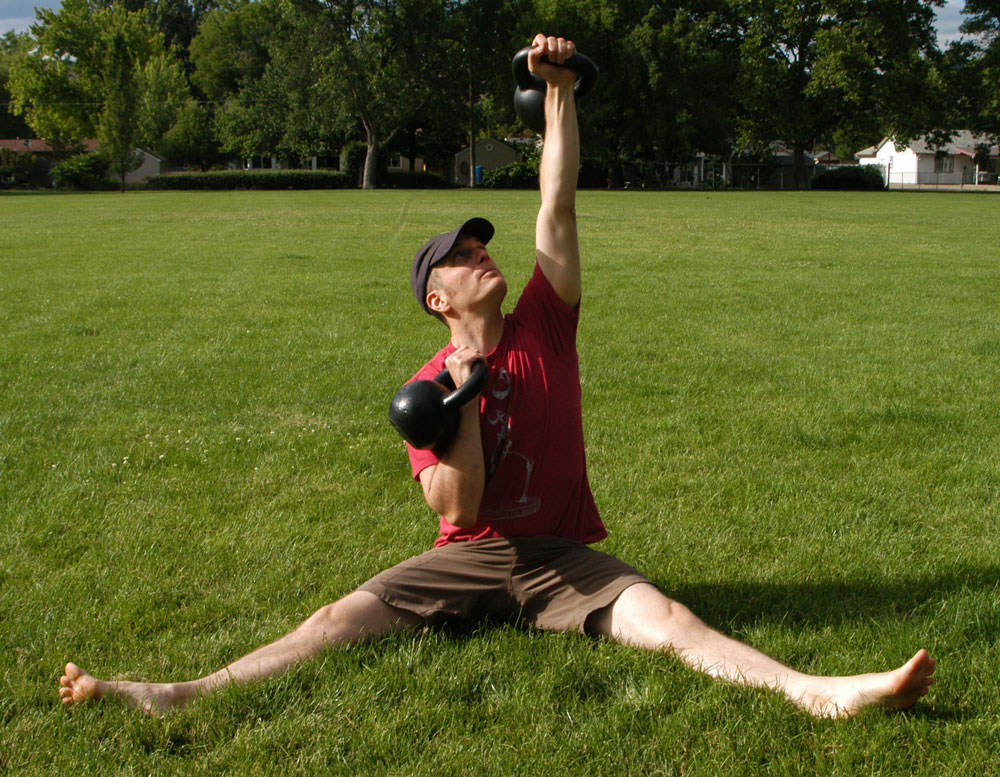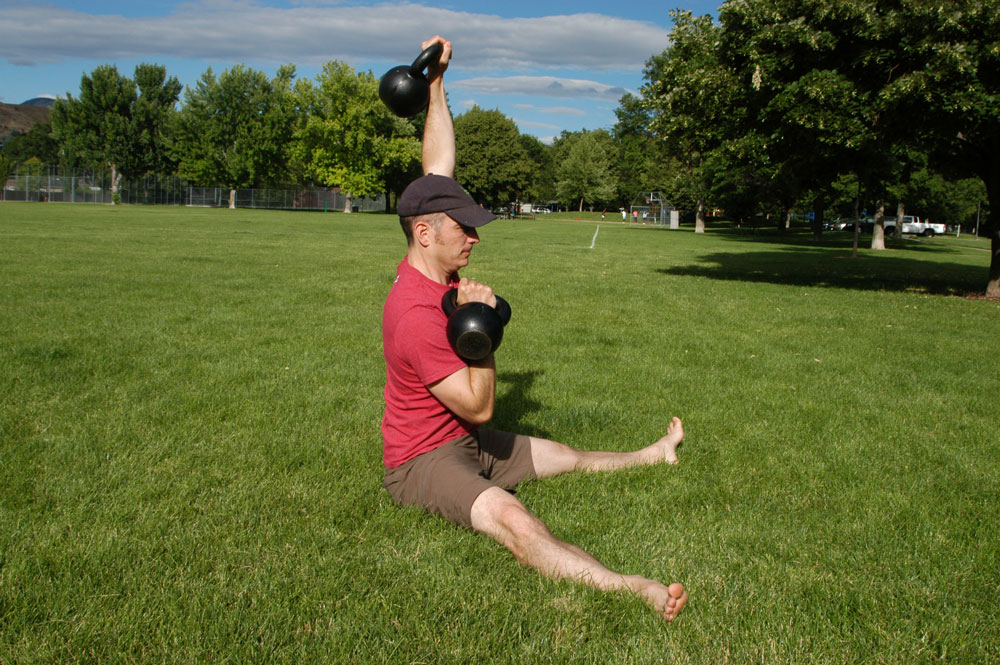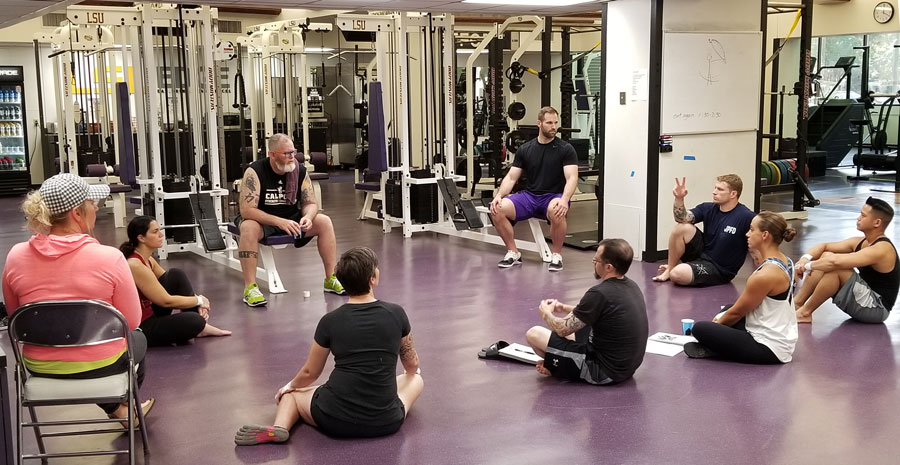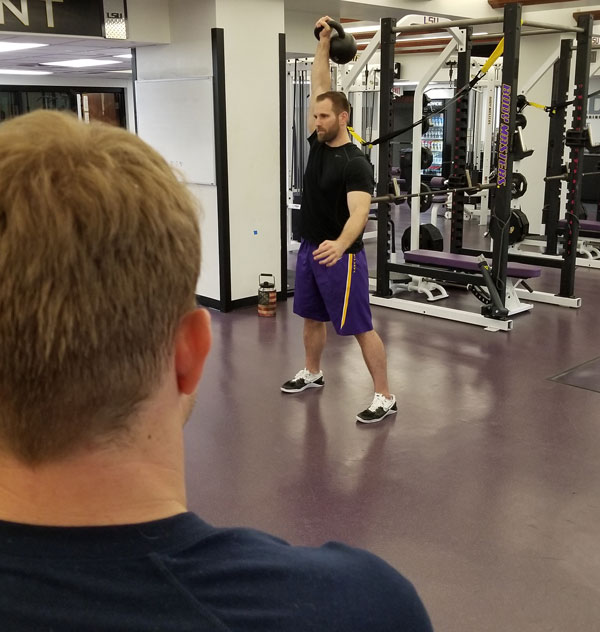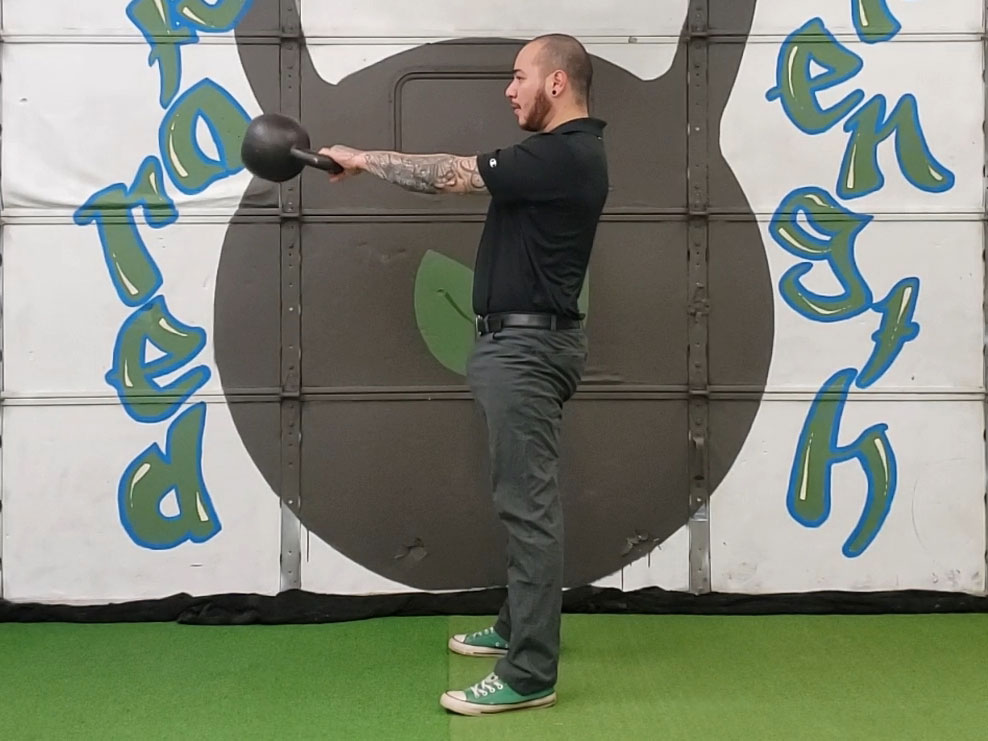
To begin learning how to perform a kettlebell swing, you must master the most fundamental movement of the exercise—the hip hinge. Learning how to properly hip hinge, hike pass, deadlift and perform a dead-stop swing will set you up for guaranteed success with the kettlebell swing.
Master Your Hinge:
The foundation of the kettlebell swing is built off a strong hip hinge. When you are able to teach your clients how to optimally use their hips, they will get the full benefits for the proper muscles used in the swing. You will also keep your clients safe and reduce their exposure to injury.
Use these coaching cues:
- Start in a tall & tight position with your feet shoulder width apart.
- Have a slight bend in your knees.
- Reach your hips back.
- Drive your hips forward and stand tall.
Master Your Hike Pass:
The next step in the kettlebell swing is to master the hike pass. This motion begins to teach you the momentum of the swing. Learning the hike pass teaches you how to properly propel the kettlebell behind you. The back of the hike pass shows you what the bottom position of the kettlebell swing looks like.
Use these coaching cues
- Get into your hip hinge.
- Tilt the kettlebell towards you and break the handle in half.
- Sit into your hips and toss the bell high into the thigh.
- Keep your chest up & eyes forward.
Master Your Deadlift:
Next is the deadlift. When teaching the deadlift, you are helping your client understand how to properly load the hips. The deadlift teaches you to snap the hips and fully lock out at the top. This is important because this teaches how you should be at the top of the swing.
Use these coaching cues
- Start with the kettlebell between your feet.
- Go into your hip hinge.
- Break the handle in half.
- Punch your feet into the ground and snap your hips forward.
Master Your Dead Stop Swing:
The last step in mastering the kettlebell swing is the dead stop swing. Mastering the dead stop swing puts all of the other steps into one. You begin by starting in a hip hinge position, next you go into your hike pass, and lastly you go into your dead lift. Each rep is initially starting the swing back over and enforcing all the skills you have learned prior to this step.
Use these coaching cues
- Start in your hike pass position.
- Toss the bell back.
- Explode through the hips and let the bell float up.
- Wait for the bell to push your hips back and park the bell.
To get the most out of your swing and master the basics, review and practice each of these steps.
***
William Sturgeon, RKC Team Leader, RKC II trains clients at his gym, Restored Strength. Contact him through his website at RestoredStrength.com or follow him on Facebook: facebook.com/restoredstrength
